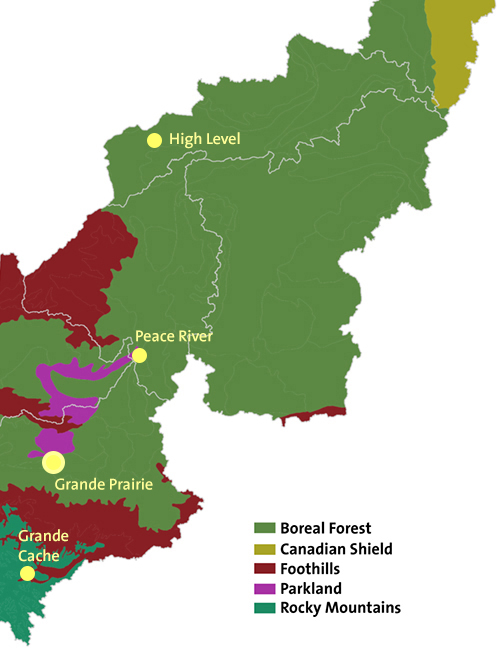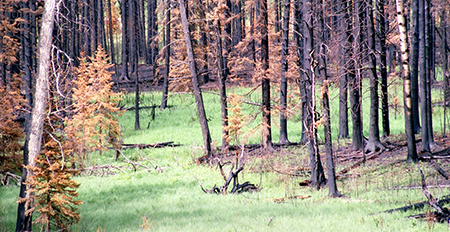The Peace and Slave WatershedThe land cover of the Peace and Slave watershed is often described by the National Ecological Framework. The framework takes into account climate, landforms, soils and plants. Areas that contain similar associations of these components are grouped in progressively more detailed categories. The broadest is the Natural Region, which is sufficient to provide an overview of the character of the watershed. Alberta's Boreal Forest3
Disturbance is a critical but normal component throughout the ecoregions of the Mighty Peace. Fire, insects, wildlife, ice storms and disease all play roles in the process. A functioning watershed is resilient and able to respond and adapt. The current state of the watershed cannot be compared to an ideal or static state but it is possible to gauge whether any element is within the natural range of variation. The concept of a natural range of variation should be considered when choosing the indicators to describe the health of a watershed. Wood Buffalo National ParkWood Buffalo National Park, a United Nations Educational, Scientific and Cultural Organization (UNESCO) World Heritage Site, lies partly within the Peace and Slave watershed. It is home to the largest population of wild bison in North America and is the natural nesting place of the whooping crane.MORE ABOUT THE PARK AT:
www.pc.gc.ca/pn-np/nt/woodbuffalo/index.aspx
|
Natural Regions of the Watershed
 |
| © 2015 Mighty Peace Watershed Alliance | CONTACT THE ALLIANCE | NEXT PAGE: Peace and Slave Rivers |